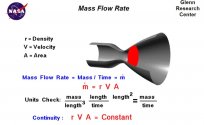Here is my thought, 150t burnt in 115s gives the overall (averaged) burn rate.You won't have to know the volume of the booster and density of propellant and the such of that. The 150 tons of propellant took 115 seconds to burn through which would give you an idea of the propellant burn rate (the equivalent to the expended fuel mass flow rate for a liquid rocket engine).
The inner side of the solid propellent is carved into star shaped grooves, the grooves' depth can change along the length, or the grooves' cross-section can change along the radius depends on design. So the burning surface changes which lead to the instantaneous burn rate changes over the 115 seconds, therefor instantaneous thrust changes over time.Obviously, the real problem is what kind of methods to determine the actual thrust and burn rate of the solid rocket motor and how they vary throughout the test.
I don't know the impact of what I am saying to the calculation of specific impulse however. But this explains the variation of thrust over time.





